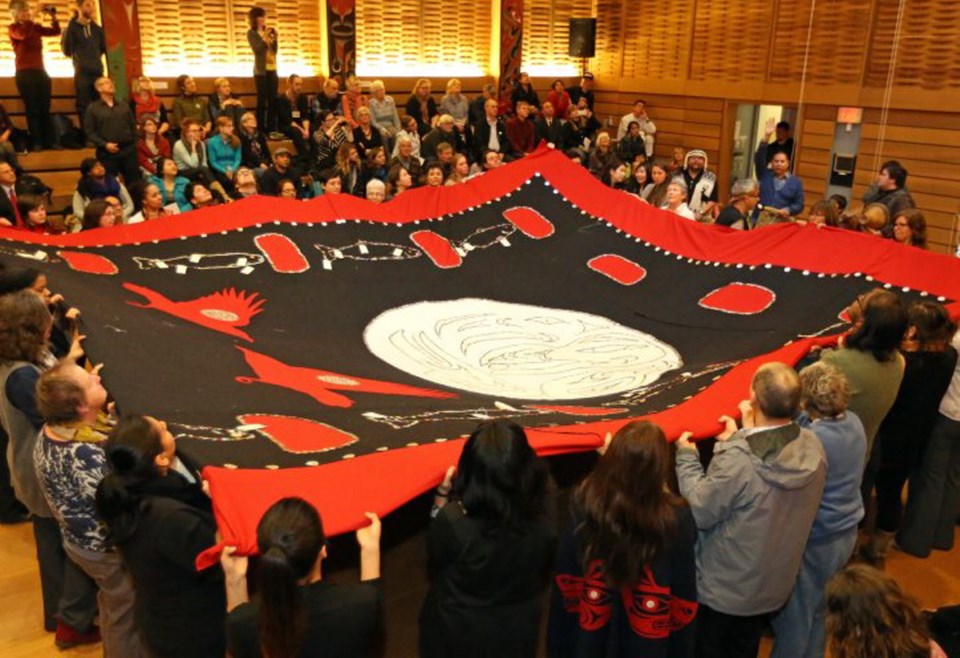What: Rebecca Belmore and Peter Morin: Dance of the world’s biggest button blanket
When: Saturday, 2 p.m.
Where: Legacy Art Gallery Downtown
Button blankets are meant to be worn, according to Tahltan tradition, so adding a performance element to the hand-crafted community textile was natural for Peter Morin.
“Tahltan people talk about button blankets as being designed for the body, for movement, for dancing. The blanket has a life,” said Morin, a Tahltan artist and curator.
Morin acted as a project adviser during the creation of the blanket, which is thought to be the largest of its kind. The project was conceived and led by art history professor Carolyn Butler-Palmer, whose class crafted the six-by-six-metre blanket, in collaboration with Morin and elder button blanket makers.
The blanket, which Morin estimates was handsewn with up to 7,000 buttons over 100 hours, has been on display since Jan. 16.
Morin has invited internationally acclaimed Anishnabe artist Rebecca Belmore to join him this weekend for a performance emphasizing the blanket’s life as well as the land’s vulnerability.
“That was partly the performative piece of it, to acknowledge the life of the blanket as best we could,” said Morin, a former Victoria resident who now teaches at Brandon University in Manitoba.
There is a tradition of blankets within almost all indigenous communities, Morin said, and is a cultural commodity that has travelled along with peoples and trade.
“Cultural practice also travels on the land. We have this artform that exists on Vancouver Island and into Alaska and northern B.C.,” he said.
Morin designed a salmon and egg pattern along part of the blanket to represent the Sacred Headwaters, a vulnerable piece of land that is the birthplace of the Skeena, Nass and Stikine rivers, as well as West Coast wild salmon.
While Morin already performed a dance about joy, acknowledging the contributors to the blanket artform and the artists who make button blankets, this performance with Belmore will address the vulnerability of the land.
“We’ll be focusing on the vulnerable land and performing the land struggle,” he said.
“It is an opportunity for us to give back to these vulnerable places.”
Belmore was the first First Nations woman to represent Canada at the Venice Biennale in 2005. Her work typically reflects on place and identity, as well as enduring colonialism.
Blankets are also a theme that Belmore has returned to several times, whether referencing the colonists’ spread of smallpox to First Nations through blankets, or the way her own mother patched blankets together from worn-out clothing. She recently announced a new major commission at the Canadian Museum of Human Rights in Winnipeg: A giant ‘blanket’ made from 10,000-plus clay beads shaped from the land that the museum is built on. During the excavation project for the museum, 400,000 First Nations artifacts were recovered from the land.
